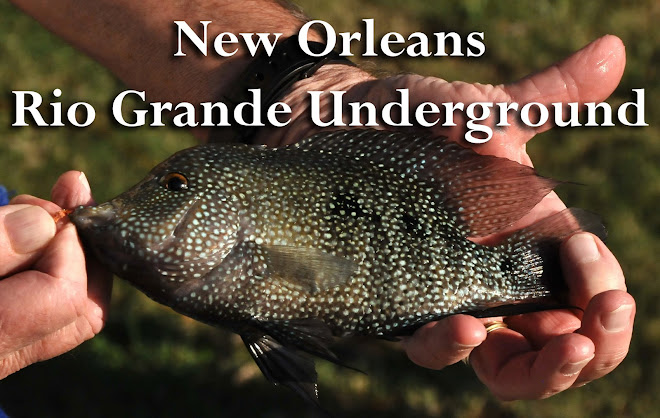
Rio Grande Perch, Texas Cichlid
- Description:
- Cichlasoma is derived from cichla, the Greek word for "thrush." It means "resembling cichla." The word cyanoguttatum is also Greek and means "blue spotted." Rio Grande cichlid are distinctive in that they exhibit cream and turquoise colored spots, giving them a speckled look. Background color varies from very dark to light olive. Lighter colored specimens usually exhibit five dark vertical bars. Both dorsal and anal fins are long and tapered extending behind the caudal peduncle (fleshy portion of the tail). Unlike tilapia and most sunfishes, which typically have three spines on the anal fin, Rio Grande cichlids are equipped with five to six anal fin spines. Adult males may also develop a pronounced "hump" on the head which is not present in tilapia. Adults usually range up to about 6 inches in length.
- Life History
- Like most of its family, the Rio Grande cichlid is generally considered a warm-water fish, and is very sensitive to cold. In general, this fish does not survive at water temperatures below 49°Fahrenheit. The species may do well in heated water, and in spring-fed waters with constant favorable temperatures. Spawning occurs in early spring. Both parents protect their young, which feed primarily on small fish, insects and crustaceans. Adults are also known to consume large quantities of fish eggs when they are available.

No comments:
Post a Comment